Compliance with ISO 21434
Ensure compliance with the ISO 21434's validation and verification requirements using an AI-driven fuzz testing platform.

Compliance with ISO 21434
Ensure compliance with the ISO 21434's validation and verification requirements using an AI-driven fuzz testing platform.

The role of fuzz testing in ISO/SAE 21434
How fuzzing helps automotive companies comply with ISO 21434
Download the white paper for free to discover:
- How fuzz testing contributes to ISO 21434 compliance.
- The specifics of cybersecurity validation and verification requirements.
- How suppliers and OEMs comply with ISO.
- The benefits of source code fuzz testing, aka white-box fuzzing.
.png?width=700&height=525&name=15%20(1).png)
.jpg)
%20-%20Cropped.jpg)


Fuzz Testing with Code Intelligence
Code Intelligence connects to the source code and, unlike static analysis (SAST), analyzes code when executed.
Every flagged issue represents an actual issue in the running code. Most are highly critical, e.g. buffer overflows, memory corruption, and leaks.
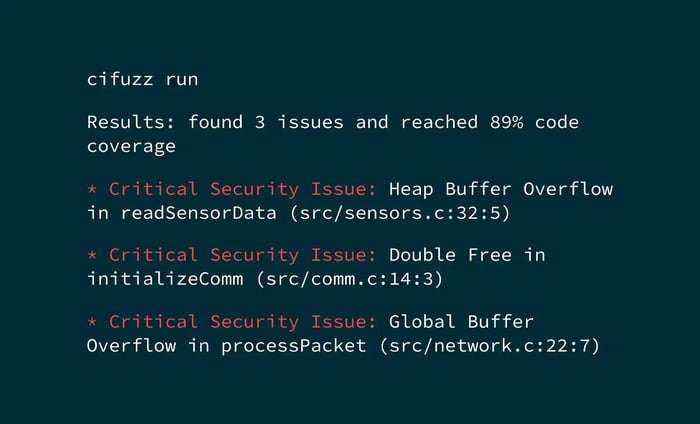
All uncovered issues are pinpointed to the exact line of code in the repository and accompanied by inputs that triggered an issue and clear actions to remediate those. So you can quickly identify the root cause, start fixing them, and release features faster.
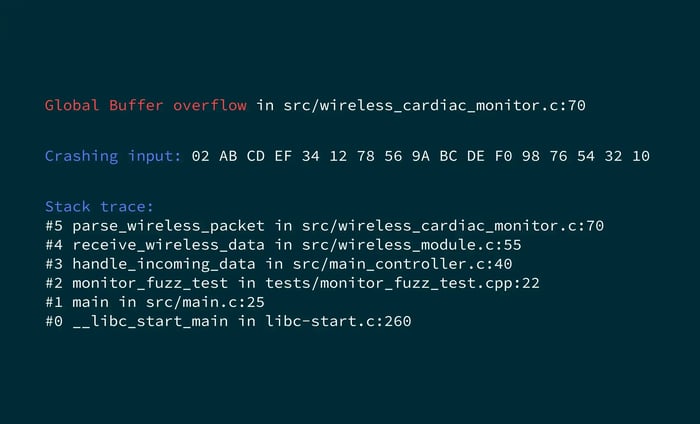
CI Spark, a built-in AI assistant that leverages large language models (LLMs) and static code analysis, automatically writes thousands of test cases and generates inputs and mocks for all dependencies.
CI Spark is also helpful in identifying top candidates for fuzzing.
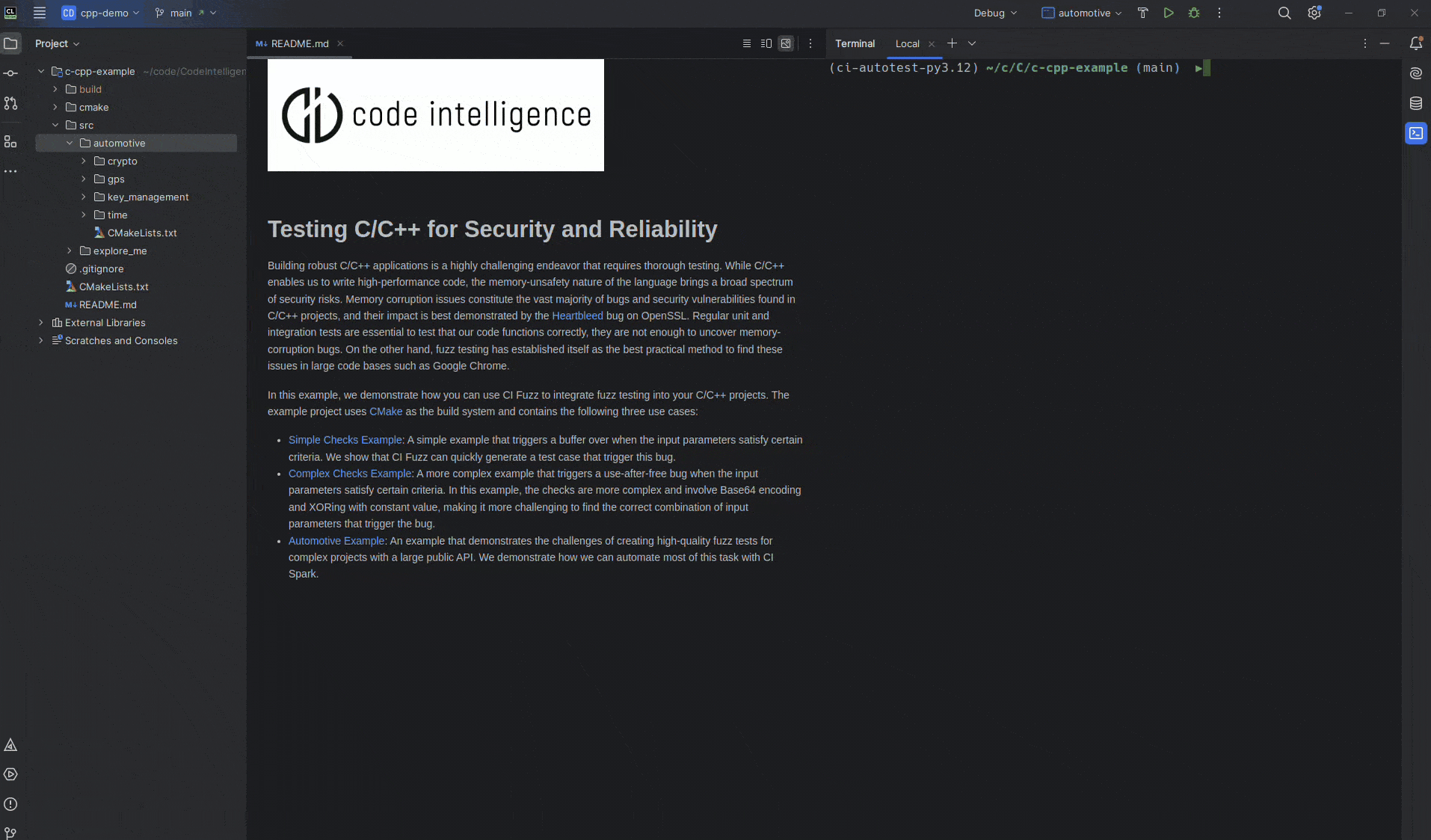
Code Intelligence leverages feedback about the software under test to achieve the highest code coverage. Subsequent executions automatically generate new test cases to detect additional paths, thereby increasing code coverage.
This ensures your development teams know how much of their code was actually executed during a test and which parts need additional testing.

Integrate Code Intelligence with your CI/CD pipeline to automatically test your software with every pull request. This ensures regressions and release blockers are identified long before reaching production.

Code Intelligence connects to the source code and, unlike static analysis (SAST), analyzes code when executed.
Every flagged issue represents an actual issue in the running code. Most are highly critical, e.g. buffer overflows, memory corruption, and leaks.

All uncovered issues are pinpointed to the exact line of code in the repository and accompanied by inputs that triggered an issue and clear actions to remediate those. So you can quickly identify the root cause, start fixing them, and release features faster.

CI Spark, a built-in AI assistant that leverages large language models (LLMs) and static code analysis, automatically writes thousands of test cases and generates inputs and mocks for all dependencies.
CI Spark is also helpful in identifying top candidates for fuzzing.

Code Intelligence leverages feedback about the software under test to achieve the highest code coverage. Subsequent executions automatically generate new test cases to detect additional paths, thereby increasing code coverage.
This ensures your development teams know how much of their code was actually executed during a test and which parts need additional testing.
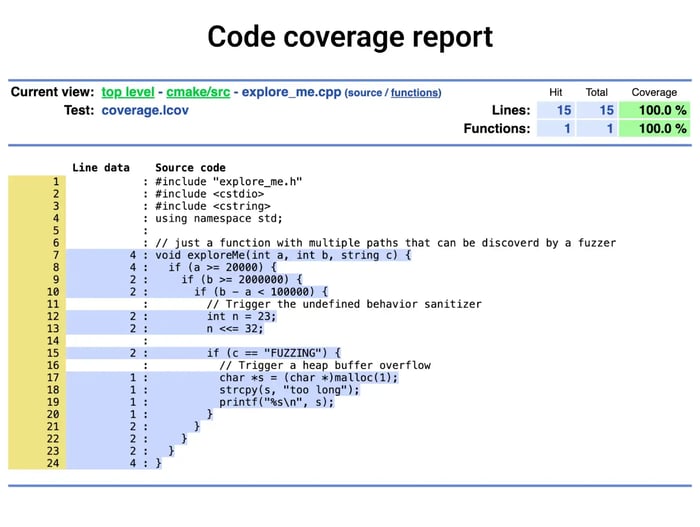
Integrate Code Intelligence with your CI/CD pipeline to automatically test your software with every pull request. This ensures regressions and release blockers are identified long before reaching production.
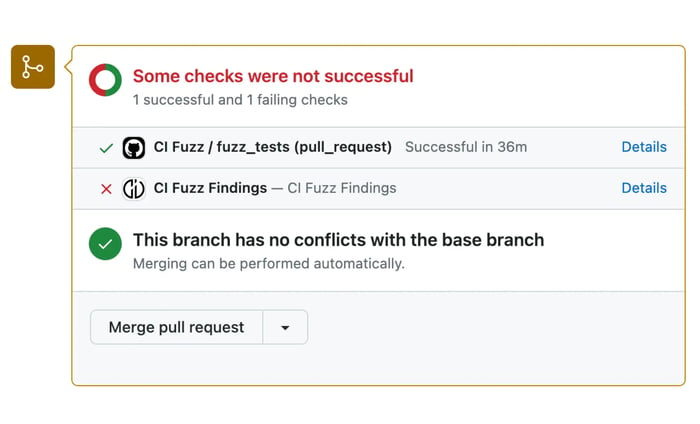
Get a free product demo
- Scale and automate your software testing without hardware dependencies.
- Detect critical bugs & vulnerabilities early in the development.
- Uncover only actual issues without false positives.
- Enable developers to reproduce & fix issues in minutes, not weeks.
- Ensure compliance with ISO 21434 testing requirements and ASPICE for cybersecurity.
Continental: Getting ISO 21434 compliant with fuzzing
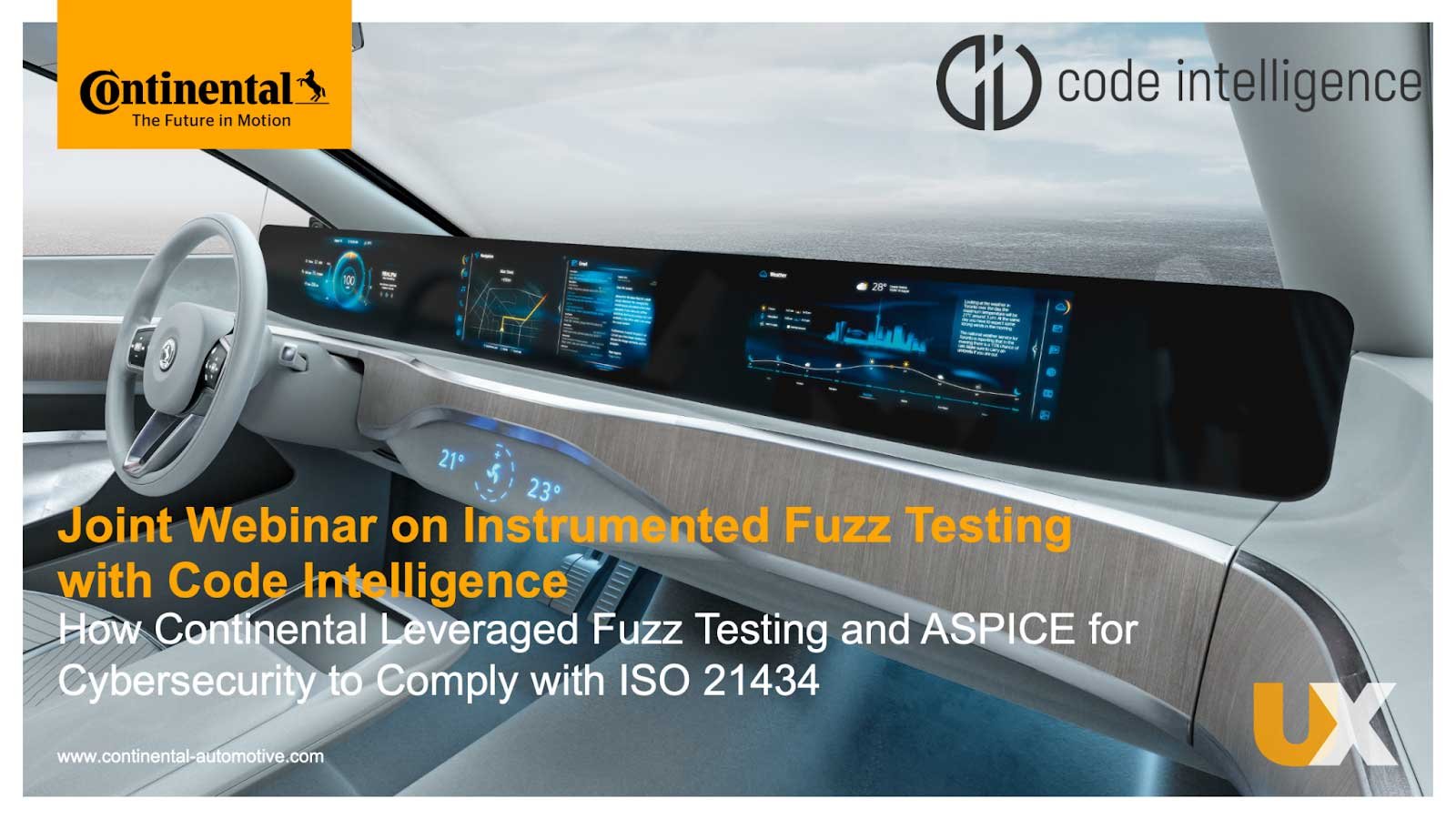
Security resources
White paper - Fuzz testing in ISO/SAE 21434
The Role of CALs in ISO 21434
ISO 21434 Checklist
Despite widespread static analysis use, every year since 2019 there has been more than 200 common Vulnerabilities and Exposures identifiers (CVEs) related to automotive components and services reported.
